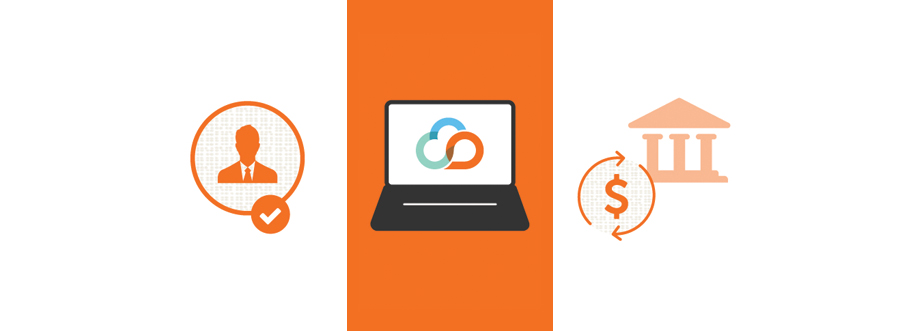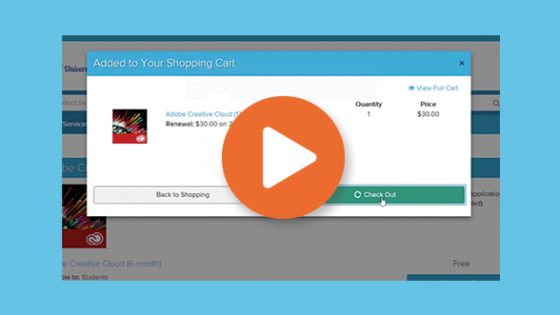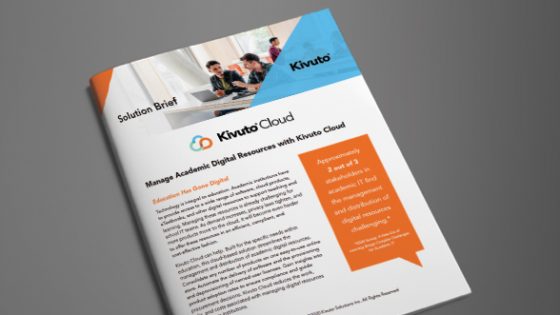Over the past few months, we’ve been looking at Educause’s 2019 list of the top ten IT priorities in higher education. From Information Security Strategy to Digital Integrations, we’ve looked at the top five items individually and in detail. Now let’s look at the final five IT goals together – and at how Kivuto can help schools achieve them.
The Importance of Data
Spots six and eight on EDUCAUSE’s list both relate to the value of data (#6: Data-Enabled Institutions, #8: Data Management and Governance). Higher-ed institutions are working to get better at both handling the information they collect and putting it to good use.
Data is a critical resource in higher education. This goes far beyond the information actually taught and learned in class. The importance of data gathered about a school’s students, faculty, and staff – from course loads to purchasing patterns – is impossible to overstate. The right data, interpreted correctly, can help with everything from departmental budgeting to curriculum planning to making more informed purchasing decisions. Without data, these important decisions effectively have to be made blind.
The management of software licenses, identities, and entitlements provides a perfect example of why good data is so valuable. It’s very difficult for faculty or IT and Procurement teams to determine how many licenses for a digital product they should order when they don’t have enough information about past adoption and usage rates to predict future demand. This effect is compounded at institutions with siloed procurement processes. When individual departments or faculty members are in the habit of purchasing directly from vendors (often in different volumes and at different price points), it becomes even harder for central IT teams to get the complete picture they need to assess campus-wide requirements.
A lack of data also carries considerable risks for institutions. Every digital product licensed by a school comes with its own unique terms and conditions. Ensuring campus-wide compliance with these conditions is difficult for IT teams under the best of circumstances. Without clear visibility into what products have been licensed, what rules and restrictions apply to each, and the number of licenses and entitlements purchased compared to the number in use, it becomes all but impossible.
Funding and Affordability
Financial concerns occupy the seventh and tenth spots on EDUCAUSE’s list (#7: Sustainable Funding, #10: Higher Education Affordability). As state funding shrinks and higher education becomes harder for many people to afford, institutions need to develop sustainable funding models, reduce costs, and generate revenue wherever possible. All stakeholders on campus can and should contribute to meeting this goal. IT is no exception.
IT teams have an underrated ability to generate revenue for their institutions. They are uniquely positioned to earn their schools reputations as centers of technological innovation and excellence. This can enhance an institution’s prestige, encouraging enrollment and retention, which brings income through tuition and fees. IT can also qualify for tech-based grants, work to eliminate inefficiencies, or implement cost-recovery systems to earn revenue for their institutions.
IT is even better positioned to help institutions cut costs. The most effective way they can accomplish this is by identifying redundant systems and services and either retiring or amalgamating them. There are many arguments for centralizing and reducing the number of systems used on campus – it simplifies maintenance and makes for a less bewildering end-user experience. Cost savings is just the most obvious benefit.
“Focus on consolidating service offerings,” EDUCAUSE advises. “Moving from two or three CRMs to one can reduce costs by consolidating contracts, knowledge, and support and can ensure greater user efficiencies in learning and usage.”
The Role of the CIO
As technology becomes more and more integral to education, the role of CIOs at higher-ed institutions is being reassessed. EDUCAUSE made this case in the ninth spot on their list of academic IT concerns – Integrative CIO.
Over the past two decades, technology has gone from just another tool used in the classroom to a critical component of education. The role of school CIOs needs to change accordingly. They should no longer be seen as people to turn to strictly for technical information or when a system stops working. They should be fully invested in all of the business-critical areas that concern other C-suite stakeholders at their school. Rather than simply overseeing staff who set up servers and troubleshoot wi-fi issues, CIOs and their respective teams are becoming user-experience experts with a key role in promoting student success. Aligning CIO priorities with those of other institutional leaders will help them make persuasive business cases for adopting new technologies or launching new projects.
“CIOs must clearly define their roles as strategic partners,” says EDUCAUSE. “A sign of success is when the IT leader is among the cabinet members and leadership groups—supplying a strategic as well as technological perspective—when these groups are considering the most important issues and ideas affecting the future of the institution.”
In short, all of the other IT objectives from EDUCAUSE’s list are far more achievable with an integrative CIO leading the way. The ability to tie technological initiatives to core business priorities and frame tech-related benefits and risks in ways that other institutional stakeholders will understand is invaluable in an IT leader.
How Kivuto Cloud Can Help
Kivuto Cloud is a solution that streamlines the management and distribution of academic software, courseware, cloud services, eTextbooks, and other digital resources. Built specifically for the complexities of higher education, it offers numerous features that can help school IT teams achieve the objectives highlighted by EDUCAUSE.
As established, accurate and actionable data is a major priority for school IT teams. By centralizing all digital-resource distribution on a single platform and providing detailed reporting functionality, Kivuto Cloud makes it easier for IT to monitor adoption and usage rates. Knowing these stats for every digital product distributed on campus empowers stakeholders to make more informed purchasing decisions and more easily monitor compliance with all applicable terms, conditions, and laws. Advanced user verification keeps this data not only centralized, but secure.
The centralized nature of Kivuto Cloud also helps schools save money. Maintaining multiple siloed systems for distributing software doesn’t just cost IT time – it costs schools money. Since Kivuto Cloud consolidates all digital resources on a single distribution platform, schools can focus their efforts – and their funding – on maintaining that platform rather than paying for several. And Kivuto handles all end-user support, taking yet another burden off of schools and IT staff.
Centralized management, detailed reporting, data security, and the ability to save schools time and money are just a few ways in which Kivuto Cloud helps schools achieve the objectives described in EDUCAUSE’s top-ten list. You can learn more about Kivuto Cloud here.














No Comments